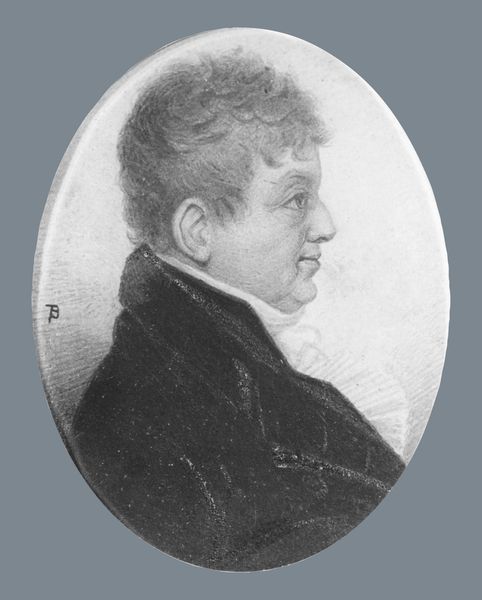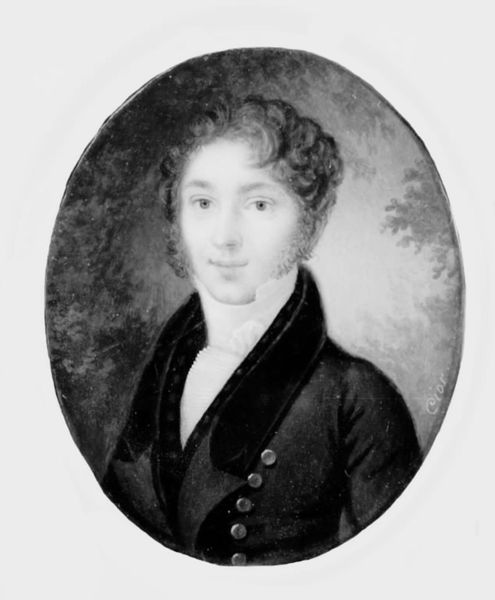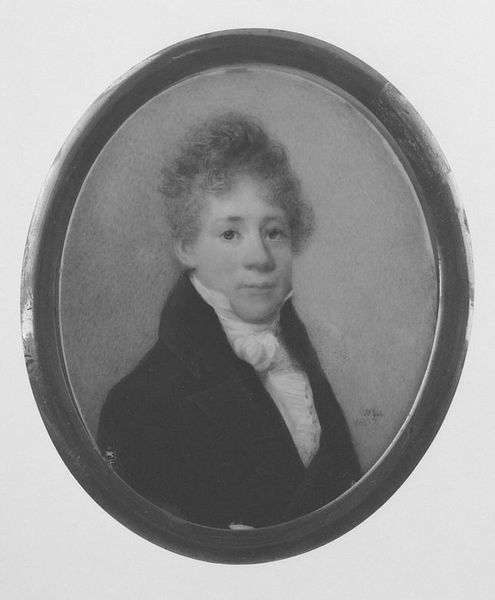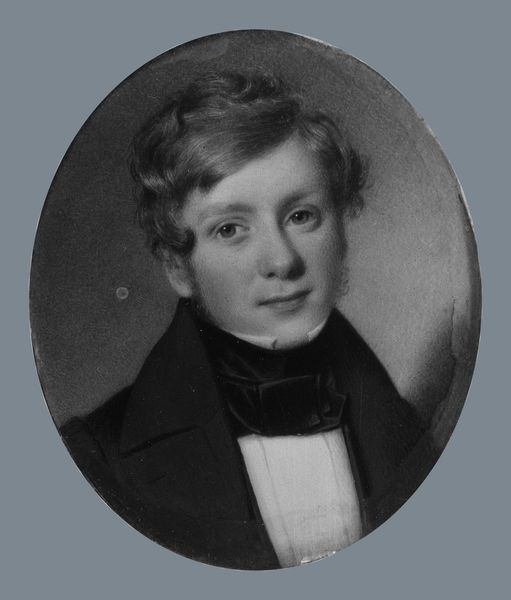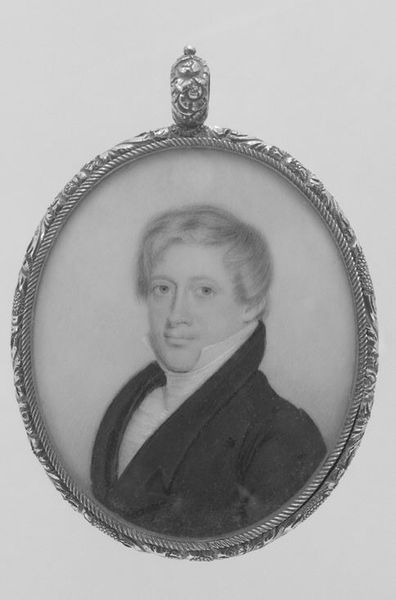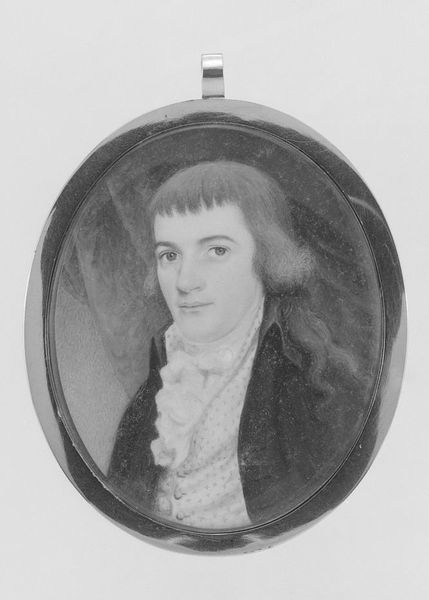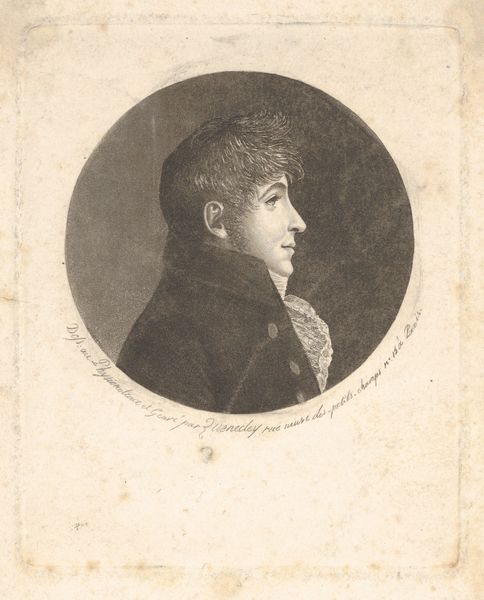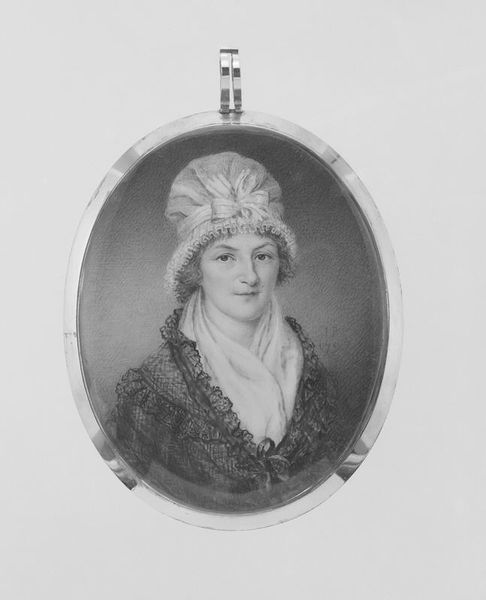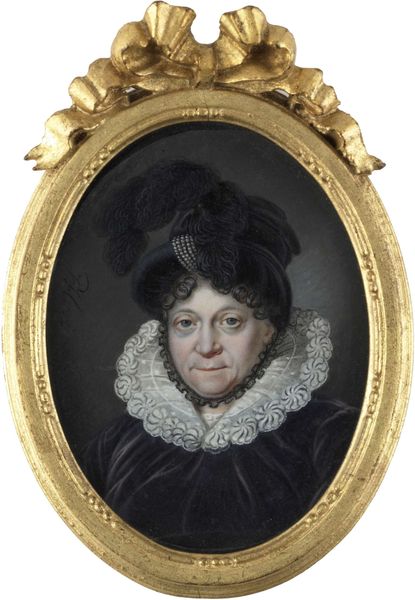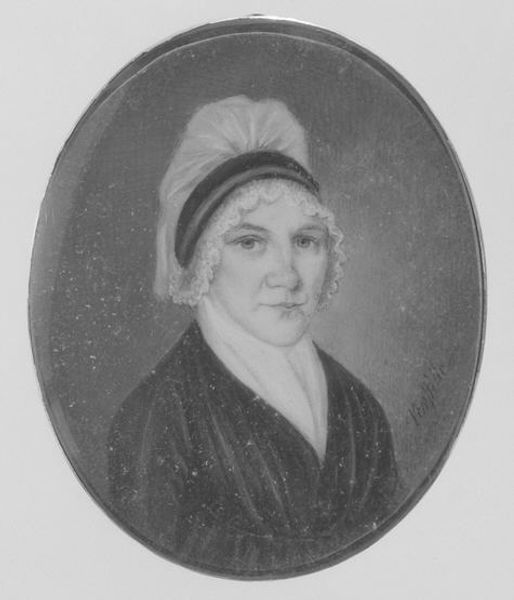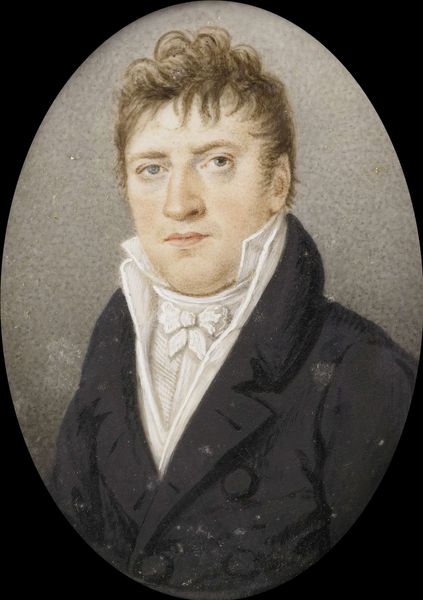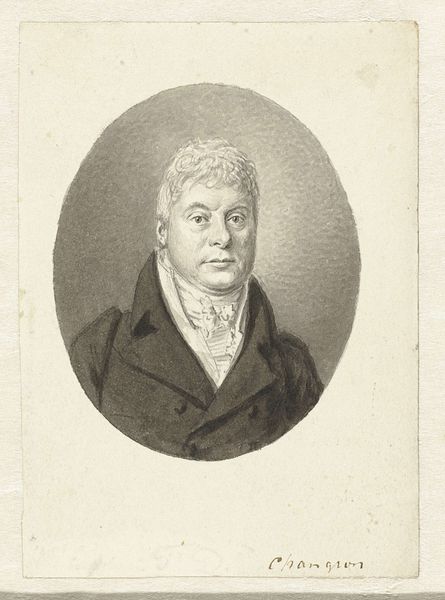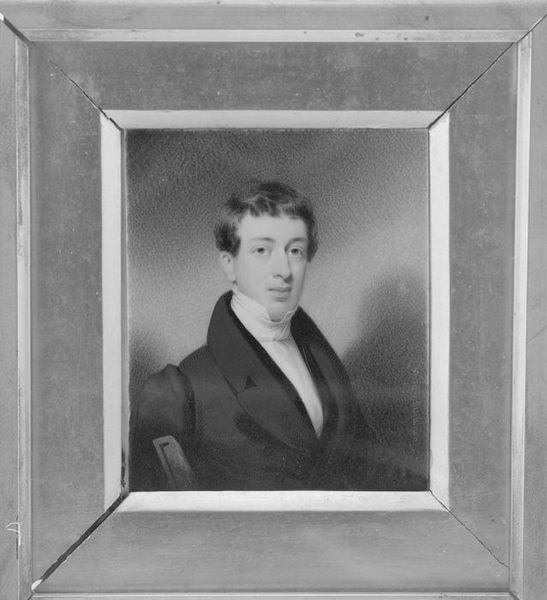
Portrait of a Lady 1803 - 1813
0:00
0:00
painting, oil-paint
#
portrait
#
neoclacissism
#
painting
#
oil-paint
#
history-painting
#
realism
Dimensions: 2 5/8 x 2 1/8 in. (6.7 x 5.4 cm)
Copyright: Public Domain
Curator: Here we have "Portrait of a Lady," painted between 1803 and 1813 by Joseph-Pierre Picot de Limoelan de Cloriviere, a stunning example of neoclassical portraiture rendered in oil paint. It's currently held at the Metropolitan Museum of Art in New York. Editor: My first impression is... restraint. She seems self-contained, almost austere, though the feathered hat adds a touch of whimsy. I feel an energy like suppressed emotion held within the subject's face. Curator: Yes, it's a compelling study in poise. The attire speaks volumes. It seems to present a certain idea about gender roles, particularly during a time where women were very tightly framed in domestic situations. It gives a masculine air to her attire, which shows that her true ambitions in life must lie beyond those imposed limitations. The Neoclassical influence is undeniable with her minimalist appearance and soft coloration that shows influence by classical sculpturing. Editor: Interesting take. I think of the artist, of the encounter that led to the subject showing a rather tense appearance...it suggests this might've been more a picture on someone else's account, with perhaps the model trying to impose the features most acceptable within the status quo. It would definitely fit this historical moment where the rise of public awareness demanded of even "aristocratic faces" to portray virtue rather than wealth. I perceive a touch of melancholy as well. Curator: Her gaze does hint at something hidden beneath that serene surface. The oval composition adds to the intimate feel, almost as if capturing a fleeting moment, maybe an impromptu shot before court proceedings that involved aristocracy facing heavy charges for misbehaving publicly or failing to embrace ideals associated with post-revolution era in French Society. The light emphasizes an idea that justice still needs clarity! Editor: True. It reminds me of a quote from Oscar Wilde: "Every portrait that is painted with feeling is a portrait of the artist, not of the sitter." Makes you wonder about Picot de Limoelan himself. His perceptions influenced everything! Maybe even this very encounter has an interesting history attached if we start doing our own psychological speculation! Curator: Precisely. Ultimately, "Portrait of a Lady" becomes a conversation starter! There isn't enough context information about his persona other than a date reference available. As in most symbolic interpretations, the viewer projects his desires to be complete within the canvas or an emotional expression with a hidden narrative! Editor: I agree. An artwork becomes great, if its greatness rests primarily on engaging our capacity to self discovery! So many hidden stories... and there will still be many, in a sense a portrait is just the beginning of other future encounters.
Comments
No comments
Be the first to comment and join the conversation on the ultimate creative platform.
